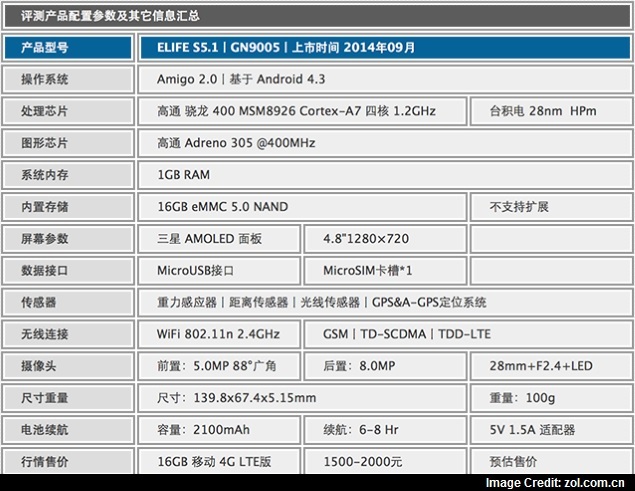
compares the features and specs of the iPad Air 2 and Surface Pro 3
The iPad Air 2 is the best iPad yet (as the latest iPad always should be), but how does it compare to one of the leading laptop/tablet hybrids?
Laptop mode

If you aren't familiar with the Surface, it's a transforming 2-in-1. Its detachable keyboard cover and built-in kickstand let you quickly and easily switch between tablet and laptop modes.
That X under the iPad isn't entirely fair, since there are some great third-party keyboards that can transform the iPad into a faux laptop. Unlike the Surface's physical connection, though, iPad keyboards connect via Bluetooth.
And since the iPad doesn't have a kickstand (the mere mention must have Steve Jobs rolling in his grave), iPad keyboards also have to supply some means of standing the tablet up.
Size

The Surface Pro 3 is big enough to make the iPad Air look like an iPad mini. At 22 percent longer and 18 percent wider, the Surface makes for an enormous tablet. On the flip side, though, it works much better as a laptop than any previous Surface.
The Surface is very thin for a desktop PC, but it's still 49 percent thicker than the razor-thin iPad Air 2.
Weight

The Surface is also 83 percent heavier than the iPad. Add its keyboard cover, and it weighs 2.5x as much as the iPad.
Build

We're looking at an aluminum body for the iPad, and a magnesium construction for the Surface. Both have high-end aesthetics.
Colors

You only have one color option for the Surface, next to three for the iPad.
Display (size)

The Surface gives you 47 percent more screen than the iPad does. Again, this is great for laptop mode, but it might feel oversized for a tablet.
Display (resolution)

The iPad has a 22 percent sharper screen.
Display (type)

Both devices have IPS panels.
Anti-reflective display

Apple says that the iPad Air 2's display can cut down on glare by 56 percent.
Stylus

Microsoft's aluminum Surface Pen is included with the Pro 3. In addition to the things that styluses always do (more precision and control), it also lets you quickly launch Microsoft's OneNote app by clicking its back end.
You can buy iPad-friendly styluses, but they're passive styluses that merely simulate finger touches. The Surface's is a more sophisticated active-digitizer stylus, including hover pointing.
Fingerprint sensor

Apple's terrific Touch ID sensor makes its way to the iPad Air 2. It lets you easily secure your tablet, and skip a password in Touch ID-friendly apps.
The online portion of Apple Pay (the company's new in-store and online payment service) also works with the iPad Air 2.
Storage

The Surface is basically a laptop trapped in a tablet's body, so it naturally offers more laptop-like storage options.
MicroSD card

The Surface also has a microSD slot that lets you expand its internal storage.
Processor

Mobile processors are getting more and more like desktop processors, and Apple's blazing-fast 64-bit A8 and A8X chips are leading the charge.
Microsoft offers three different Intel Core (Haswell) processor tiers for the Surface.
RAM

Depending on which storage/processor configuration you choose, you'll get either 4 GB or 8 GB of RAM from the Surface.
The iPad Air 2 is the first (and so far only) iPad with 2 GB of RAM.
Battery

Apple estimates 10 hours of web use over Wi-Fi for the iPad. Microsoft says you'll get about an hour less than that on the Surface.
Cellular (LTE) option

You can pay an extra US$130 over the Wi-Fi only version to get an iPad that can use cellular data. No such luck for the Surface.
Cameras

The iPad Air 2 has an improved rear camera over last year's iPad Air.
Split-screen multitasking

Apple has yet to add side-by-side multitasking to the iPad. Windows supports this, both in desktop apps and using the Snap feature in Modern (Start Screen) apps.
Software

Speaking of software, we're looking at iOS 8.1 on the iPad Air and Windows 8.1 Pro on the Surface. And yes, this Surface runs legacy desktop apps.
Release

The Surface Pro 3 is already four months old. The iPad Air 2 is rolling out this week.
Starting price

If you want a device that's strictly a tablet, then you're much better off with the iPad. Not only is it lighter and thinner, with a much better selection of touch apps – but it's also $430 cheaper (there's no point in buying the Surface without also throwing in its keyboard cover).
But if you want a device that can serve as both laptop and tablet – and do a pretty damn good job at both – then you might find that the Surface is worth the extra cash. iPad apps are having more overlap than ever with desktop apps, but I still couldn't use an iPad for my main work machine ... even with a keyboard cover.




























